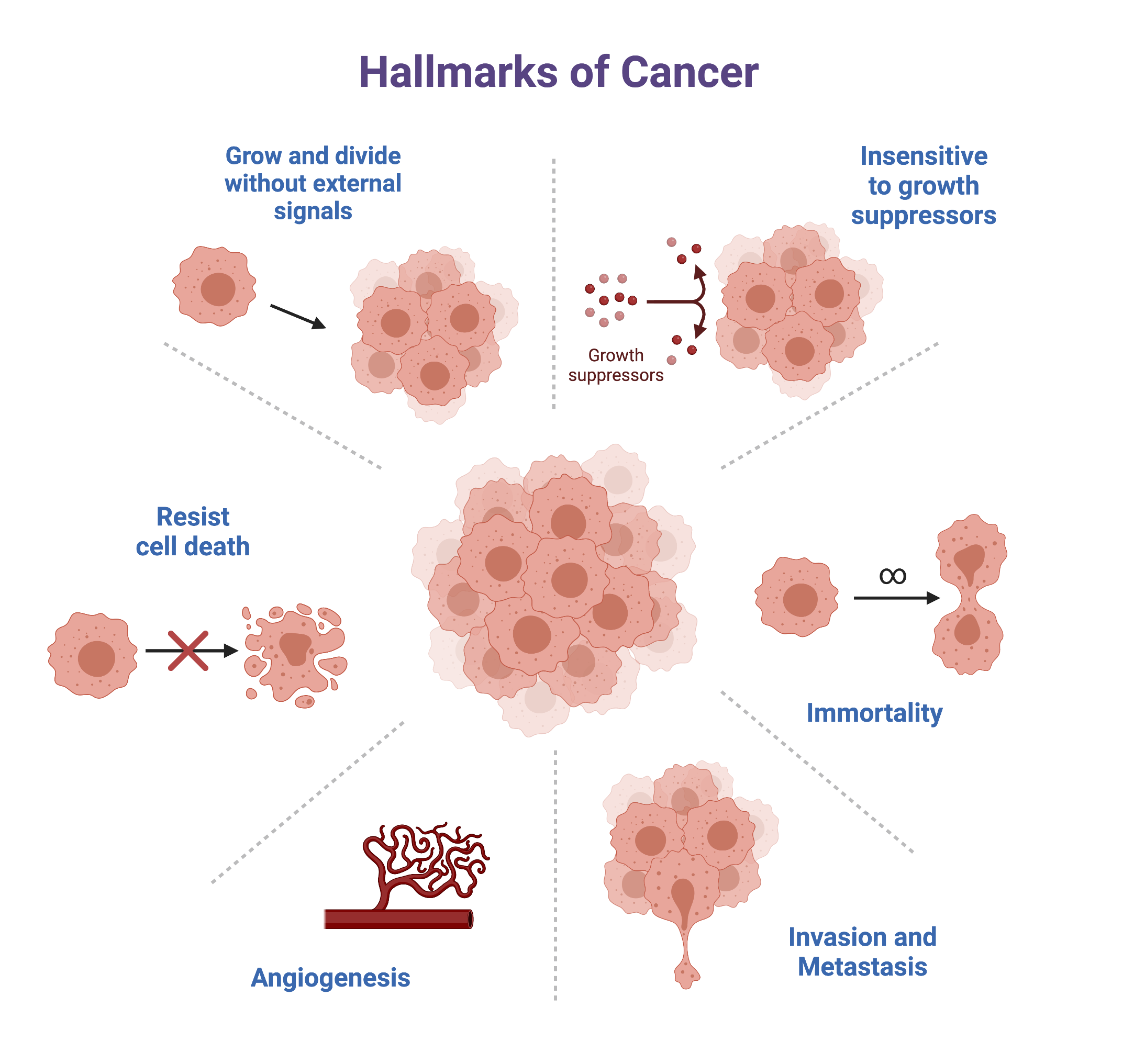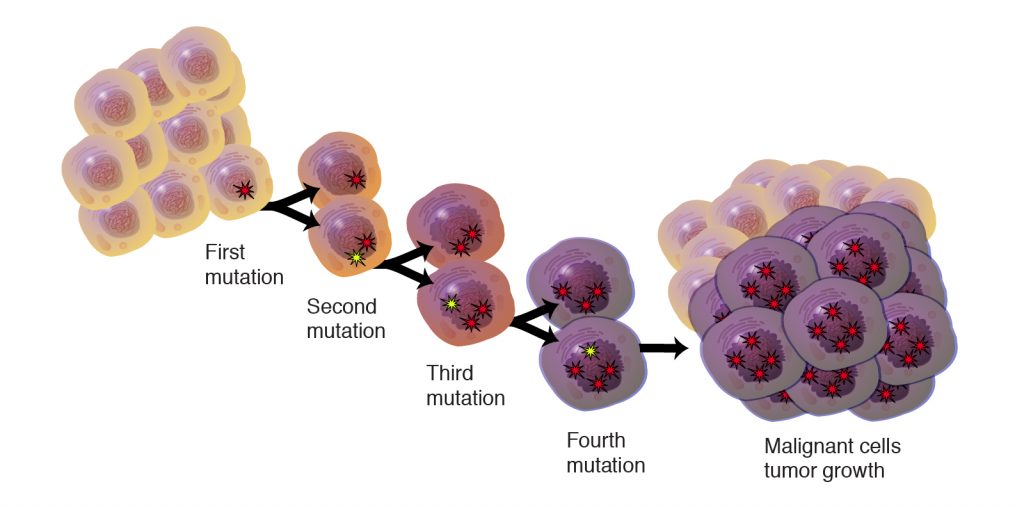17.3 Cancer
What is Cancer?
Cancer is not a single disease. Rather it is a name given to a group of diseases that share a common feature — uncontrolled cell division. Cancer can arise in almost any place in the body, and cancers are often named for the organs, tissues, or cell types in which they arise. Cancerous cells divide and have the potential to spread to neighboring tissues, or even distant locations in the body. There are at least 100 different kinds of cancers in the human species. Some cancers can be successfully treated; others are fatal. Other species develop cancers as well.
Although cancer is a group of multiple diseases, there are acquired traits that are common to cancers. Cancer cells develop abilities that facilitate malignant growth. These include the ability to generate their own growth signals, the ability to evade extracellular growth suppressors, the ability to evade the process of apoptosis, the ability to replicate indefinitely, the ability to recruit a blood supply in a process called angiogenesis, and the ability to invade other tissues.
Cancer cells can also acquire the ability to migrate to other locations in the body and grow there, unlike normal cells. Metastasis is the spread of cancer cells, often through the bloodstream or lymph system. Metastatic cancer cells can form tumors in the new location. Often, the primary cancer itself is not fatal, but metastatic tumors are associated with worse prognoses.

How Does Cancer Develop?
Cancer is a genetic disease, but not in the same way as other inherited disorders such as cystic fibrosis or Tay-Sachs disease. Cancer results when mutations accumulate in multiple genes in the same cell in such a way that control of the cell cycle is lost. Although some mutations that contribute to the development of cancer are sometimes inherited, additional mutations must be acquired during a person’s lifetime. This is why the biggest risk factor for cancer is simply age. Older individuals have had more time to accumulate the necessary mutations within the same cell that can cause that cell to become cancerous.
One mutation is probably not sufficient to cause cancer. Multiple mutations are required. Moreover, only those mutations that occur in certain genes can contribute to the development of cancer. These genes include tumor suppressor genes, DNA repair genes, cell cycle control genes, and growth factor genes, and other genes that alter the rate of growth or progression through the cell cycle.

programmed cell death
formation of new blood vessels
spread of cancer cells from their original site to a new location

